Make Mine Music (1946) Online
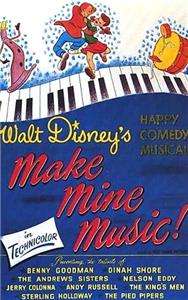
Segments: "A Rustic Ballad," a story of feuding hillbillys; "A Tone Poem," a mood piece set on a blue bayou; "A Jazz Interlude," a bobby-soxer goes jitterbugging with her date at the malt shop; "A Ballad in Blue," dark room, rain and somber landscapes illustrate the loss of a lover; "A Musical Recitation," the story of Casey at the Bat; "Ballade Ballet," ballet dancers perform in silhouette; "A Fairy Tale with Music," Peter and the Wolf; "After You've Gone," four musical instruments chase through a surreal landscape; "A Love Story," about the romance between a fedora and a bonnet; "Opera Pathetique," the story of Willie, the Whale Who Wanted to Sing at the Met.
| Complete credited cast: | |||
| Nelson Eddy | - | Narrator / Willie / Whitey / Tetti-Tatti / Sailors / Newsman / Men / Workman / Cabbie / Cop / Scientists / Woman / Cat / Opera Singers / Chorus (segment "The Whale Who Wanted to Sing at the Met") (voice) | |
| Dinah Shore | - | Dinah Shore (voice) | |
| Benny Goodman | - | Benny Goodman | |
| The Andrews Sisters | - | Andrews Sisters (voice) (as Andrews Sisters) | |
| Jerry Colonna | - | Narrator (segment "Casey at the Bat") (voice) | |
| Andy Russell | - | Andy Russell (voice) | |
| Sterling Holloway | - | Narrator (segment "Peter and the Wolf") (voice) | |
| Tatiana Riabouchinska | - | Tatiana Riabouchinska (as Riabouchinska) | |
| David Lichine | - | David Lichine (as Lichine) | |
| The Pied Pipers | - | The Pied Pipers (voice) (as Pied Pipers) | |
| The King's Men | - | The King's Men (voice) (as King's Men) | |
| Ken Darby Chorus | - | Ken Darby Chorus (voice) |
One of Disney's four "Package Films". During the Second World War, the studio lost a lot of manpower and resources which left them with countless unfinished ideas too long for shorts, too short for features. So, inventive as they are, they stuck short ideas together into feature length movies. The other three were The Adventures of Ichabod and Mr. Toad (1949), Melody Time (1948) and Fun & Fancy Free (1947).
Animation in the tone poem "Blue Bayou" was originally created for the deleted "Clair de lune" sequence of Fantazija (1940).
The animated short "Martins and The Coys" was cut from the VHS and DVD release (mainly because of comic gunplay). However, a few years before its release it was shown in its entirety on TV.
The term "cats" in "All the Cats Join In" does not refer to "cat" the animal. It is short for "hepcat" and its plural form "hepcats", a term for those associated with the jazz subculture of the 1940s and 1950s. It is a synonym to "hipster" which was associated with the same subculture.
The segment "Casey at the Bat" is based on the baseball-themed poem "Casey at the Bat: A Ballad of the Republic Sung in the Year 1888" (1888) by Ernest Thayer (1863-1940). It concerns an overconfident baseball player who ends up loosing the game for his team.
This was the first Disney animated feature film released following the end of World War II.
Various scenes from the segment "All the Cats Join In" have been censored in recent releases, mostly for brief moments of nudity and focus on the feminine parts of the female teens. Attention has been drawn to a scene featuring a naked girl jumping out of a shower into her clothes.
The shower scene from "All the Cats Join In" and the featured silhouette of a naked teenage girl were considered controversial in the 1940s. The Production Code Administration thought it violated the Hays Code and wanted the scene cut. The Disney studio was admonished, but the scene was retained.
Animation historian Sean Griffin believes that the images of sexy and sexualized female teens in the "All the Cats Join In" was indicative of changes in 1940s culture. The World War II years had seen the emergence of cheese-cake posters and photos as an industry, and the release of popular animated shorts with sexy images and characters pioneered by Tex Avery. Disney was being influenced by a popular trend. It would not last for long after the War.
The segment "Two Silhouettes" features rotoscoped animation. Rotoscoping is an animation technique in which animators trace over footage, frame by frame, for use in live-action and animated films. The dancing silhouettes are from images of ballet dancers (and husband and wife) David Lichine (1910-1972) and Tatiana Riabouchinska (1917-2000).
This was the second time ballet dancers David Lichine (1910-1972) and Tatiana Riabouchinska (1917-2000) worked in a Disney film. They previously served as dance models for a male alligator and a female hippopotamus in the "Dance of the Hours" ballet sequence of Fantazija (1940).
The "Peter and the Wolf" has an explicitly Russian setting and Russian characters who are portrayed sympathetically. It is an example of the period it was produced. For much of World War II, the United States and the Soviet Union were allies. Pro-Russian and and Pro-Soviet works such as the film "The North Star" (1943) were regularly produced by American creators. By 1946, when "Make Mine Music" (1946), the War had recently ended and the two countries were still nominally allied. The tensions that would lead to the Cold War were already present, but major actions of hostility did not take place until 1947. It was only then than Anti-Soviet sentiment became the norm in the United States.
In "The Whale Who Wanted to Sing at the Met", all of the operatic vocals - from the bass up through soprano, and even the chorus - were sung by Nelson Eddy. By tinkering with his home recording equipment (his father was a machinist), Eddy was able to sing and record sextets with himself for the soundtrack.
The reception of the "Blue Bayou" segment is rather mixed. Since it contains no dialogue and has no plot, it is often described as boring. However it has also received favorable reviews for its stunning visuals.
The animation of the "Blue Bayou" segment was created for the film "Fantasia" (1940) and set to the music of "Clair de Lune", a part of the "Suite bergamasque" (1905) by Claude Debussy (1862-1918). While not used as originally intended, it was decided to use it in a package film. Since a piano suite would be out of place in a film featuring popular music, the new song "Blue Bayou" was created for use in the new film. Both versions of the segment survive and are available.
The segment "Without You" consists of a series of impressionistic images set to the tune of a ballad, called "A Ballad in Blue". Its theme is lost love.
Ernest Lawrence Thayer (1863-1940), creator of "Casey at the Bat" (1888) and its title character, was not a professional writer. He was the humor columnist of the newspaper San Francisco Examiner, and on occasion contributed articles on sports. The poem is one of his few written works to survive and the only one to become popular.
The poem "Casey at the Bat" (1888) never elaborates on the origin of Casey and does not give him a full name. However "Casey" is an Irish name, meaning "vigilant", "watchful". Casey's creator Ernest Lawrence Thayer (1863-1940) confirmed that he borrowed the name Casey from an Irish acquaintance of his.
The Disney version of "Casey at the Bat" (1888) was the only segment to receive its own sequel: the animated short Casey Bats Again (1954). It features Casey as the father of 9 female baseball players.
The segment "Peter and the Wolf" is based on the 1936 music composition and accompanying story by Sergei Prokofiev (1891-1953). It is the only work by a Soviet citizen included in this film.
In the original "Peter and the Wolf" (1936) story, Peter is a Young Pioneer. The Pioneers were a Soviet children's organization founded as a communist version of the Scouts in 1922. They were a government and party-funded organization. They combined typical scouting teachings with lessons on communist ideology. Recruitment drives increased membership. In 1923, there were only about 75,000 members. By 1926 there were 2 million members. The organization disbanded in 1991, though there are successor organizations.
In the original "Peter and the Wolf" (1936) story, Peter captures the wolf alive and transports him to a zoo.
While "Peter and the Wolf" (1936) is one of the more popular creations of Sergei Prokofiev, its creator feared it would be a flop. Its initial performance was coldly received. It was only the second performance that saw the audience warm to it. Soon it became an international hit.
Despite the relative popularity of "Make Mine Music" (1946), it is one of the few classic Disney animated films that were never adapted to other media and did not produce many spin-offs.
The birds featured in the "Blue Bayou" segment are egrets. They are a type of heron. Several egret species were endangered for much of the 20th century.
The Peter and the Wolf (1946) music and narration (performed by Sterling Holloway) are featured as a bonus track on the 2015 Legacy Collection soundtrack of Fantazija (1940).
The romance between film characters Henry Coy and Grace Martin, who belong to enemy families, has been seen as as a hillbilly version of "Romeo and Juliet" (1597).
The segment "All the Cats Join In" is a depiction of 1940s teen culture and its association with popular music and dancing. It is a rare subject for a Disney film of this era.
In the "Casey at the Bat" segment, a sign on the stadium wall announces that the Mudville 9 are playing Burbank in the fateful game, a reference to the location of the Walt Disney studio.
"The Martins and the Coys" and its featured family feud are loosely based on the famous Hatfield-McCoy feud (1863-1891). The feud has inspired much folklore and popular culture adaptations, though its details are often ignored.
"The Martins and the Coys" is one of several popular culture depictions of hillbilly culture and stereotypes. "Hillbilly" is a somewhat derogatory term for dwellers of the rural, mountainous areas of the Appalachia and the Ozarks.
The Hatfield-McCoy feud (1863-1891), inspiration for "The Martins and the Coys" segment of the film, is often misremembered as typical hillbilly violence and having no real reason behind it. Actually the background for the conflict was the American Civil War. Members of the Hatfield family of West Virginia were all Confederate supporters, while the McCoy family of Kentucky had members fighting for both sides for the War. When a returning Union soldier who belonged to the McCoy family was murdered by a local Confederate militia unit, the Hatfield family was implicated. It was the first episode of a long feud.
The romance between characters Henry Coy and Grace Martin, who belong to enemy families, is loosely based on an episode of the Hatfield-McCoy feud (1863-1891). There was an affair between Johnson "Johnse" Hatfield and Roseanna McCoy, members of the enemy families of the feud.
The term "bayou" in the title of the "Blue Bayou" is a Franco-English term for a body of water typically found in a flat, low-lying area. It has been applied to various wetlands, areas of slow-moving streams and rivers, and to marshy lakes. The term derives from the Cajun French language, where it is a loan word from Choctaw "bayouk" ("creek", "small stream").
The area depicted in the "Blue Bayou" segment is never specified. However, several commentaries on the film suggest that the setting are the Everglades, a natural region of tropical wetlands in southern Florida. It is one of the most celebrated geographic areas of the United States.
Despite its name, the song "Blue Bayou" from this film should not be confused with the 1960s hit song of the same name. They share a title but nothing else, and the later song is mostly associated with singers Roy Orbison and Linda Ronstadt.
The reception of the "Without You" you segment has been mixed in recent years. Its supporters find the segment's visuals interesting, the song meaningful, and praise the romantic theme. Its detractors point to its lack of a plot, find the subject of lost love to be rather common place in songs, and find the music dated.
There has been speculation since the late 19th century whether the character Casey is based on any particular baseball player. The creator of the poem never confirmed any theory. The most popular candidate for the prototype of the character is Michael Joseph "King" Kelly (1857-1894), a star player at the time the poem was written.
Mudville, the home city of Casey's team, is most likely fictional. However the name is not a creation of Ernest Lawrence Thayer (1863-1940). Thayer grew up in Worcester, Massachusetts. The neighboring town of Holliston, Massachusetts had an area called Mudville. In later life, Thayer worked in California. The local city of Stockton, had various informal names. One of them was also Mudville.
Cast members David Lichine (1910-1972) and Tatiana Riabouchinska (1917-2000) were both Russian expatriates. They were both born in the Russian Empire, but their families left the country following the October Revolution (1917).
The reception of the "Two Silhouettes" segment tends to vary, depending on whether each particular viewer and critic is interested in ballet dancing or not. It variously ranks among both the best and the worst segments of the film.
In the original "Peter and the Wolf" (1936) story, the wolf swallows the duck alive. It never escapes, but ends the story quacking from the belly. In both the Disney version and the 1995 hybrid special of the same name (That gives the animated similarity to Disney's), the Duck is only presumed swallowed. It turns up alive and free by the finale.
Other than Peter, the rest of the characters in the original "Peter and the Wolf" are unnamed. The Disney version provides names for most of them. The bird is called "Sasha", the duck "Sonia" the duck, the cat "Ivan", and the hunters are called "Misha", "Vladimir", and "Yasha". Only the Grandfather and the Wolf remained unnamed.
The Disney version of "Peter and the Wolf" was edited into the film Belle's Tales of Friendship (1999). Sterling Holloway's narration was replaced by a new version.
There are various theories that Sergei Prokofiev created the original "Peter and the Wolf" (1936) as a political allegory. According to one of them, Peter is named after Peter the Great and represents Russia. The Wolf represents the enemy on the horizon, Nazi Germany and/or its Führer Adolf Hitler. The name "Adolf" means "noble wolf".
The characters Johnnie Fedora and Alice Bluebonnet are named after types of hats. A fedora is a felt hat with a wide brim and indented crown. It was introduced in 1882 by actress Sarah Bernhardt (1844-1923) and the hat type is named after one of the characters she played on stage. It was popular with both women (particularly suffragettes) and men. A bluebonnet, or blue bonnet, is a traditional flat Scottish hat made of blue wool. The term bonnet is also the name of a type of hat for girls and women, though designs changed greatly over the centuries.
The character Willie the Whale made minor appearances in the television series "House of Mouse", including once paired with the similarly named Willie the Giant.
Willie the Whale seems to specifically be a sperm whale, a species that is the largest of the toothed whales and the largest toothed predator. The sperm whale's clicking vocalization, a form of echolocation and communication, may be as loud as 230 decibels underwater, making it the loudest sound produced by any animal.
Casey from this film is not the only Disney character by that name. There is also Casey Coot, a comic book character who is a member of Donald Duck's extended family. Specifically Casey Coot is Grandma Duck's brother, Gus Goose's maternal grandfather, and Donald Duck's paternal great-uncle.
The segment "After You've Gone" features anthropomorphic instruments.
The segment "Johnnie Fedora and Alice Bluebonnet" is a romance story featuring two anthropomorphic hats.
"The Whale Who Wanted to Sing at the Met" is an early example of a Disney film with no happy ending. Willie the Whale is killed and enters the afterlife.
At the beginning of "The Whale who Wanted to Sing at the Met", Nelson Eddy sings a long sustained opera note. As he is singing it, animation is seen of newspapers blowing in the wind, lightning bolts flashing, and storm clouds forming. Also included in this brief animation sequence are a curtain blowing from the "Dance of the Hours" sequence in "Fantasia" and a witch or demon flying by on a broomstick that seems to have been taken from the "Night on Bald Mountain" sequence that was also in "Fantasia".
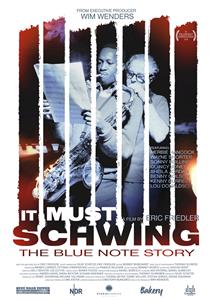
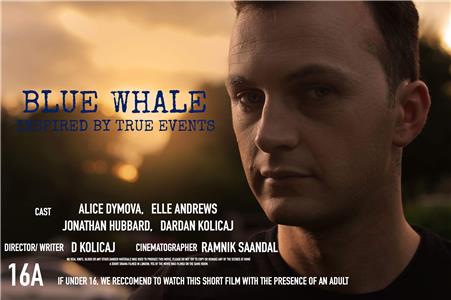
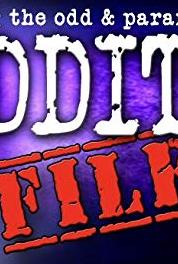
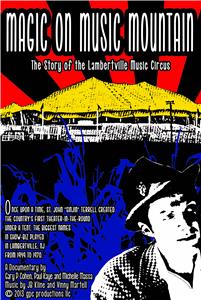


User reviews